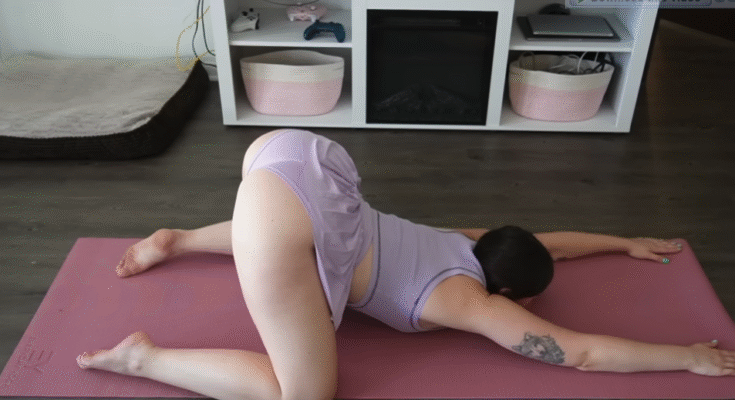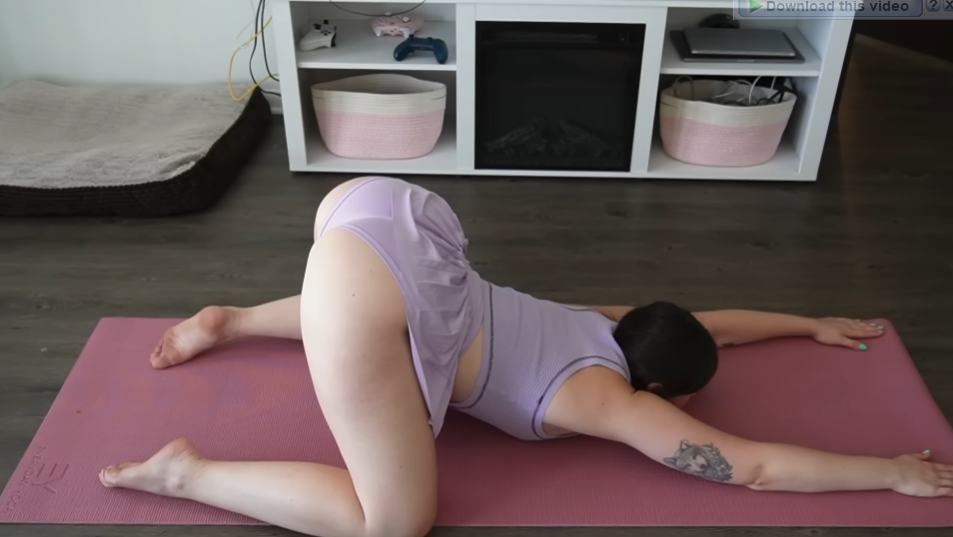
Starting gymnastics or a stretching routine can be both exciting and intimidating. You might look at professional gymnasts or dancers and think, “I’ll never be that flexible!” But here’s the truth — everyone starts somewhere. Every strong, flexible gymnast once began as a beginner, learning how to stretch properly, how to balance, and how to listen to their body.
Stretching and gymnastics go hand in hand. Flexibility helps gymnasts move gracefully, while gymnastics builds strength and body control. If you’re new to both, this guide will walk you through everything you need to know — from warm-ups to basic stretches, and even simple gymnastics moves to safely begin your journey.
So grab your mat, wear something comfortable, and let’s start your first step toward a stronger, more flexible, and confident you. 🌈
💪 Why Stretching Is Important in Gymnastics
Before we dive into the moves, it’s essential to understand why stretching matters. For beginners, flexibility is the foundation of gymnastics. Every flip, split, or backbend depends on how mobile your muscles and joints are.
Here’s why stretching is key:
- Improves flexibility: It allows you to move your body into positions safely and effectively.
- Prevents injury: Warm, stretched muscles are less likely to strain or tear.
- Enhances performance: The more you stretch, the smoother and stronger your movements become.
- Promotes recovery: Stretching after practice helps reduce soreness and stiffness.
- Builds awareness: It helps you connect with your body — a crucial skill for gymnasts.
Now, let’s learn how to stretch like a gymnast.
🌞 Step 1: Warm-Up (5 minutes)
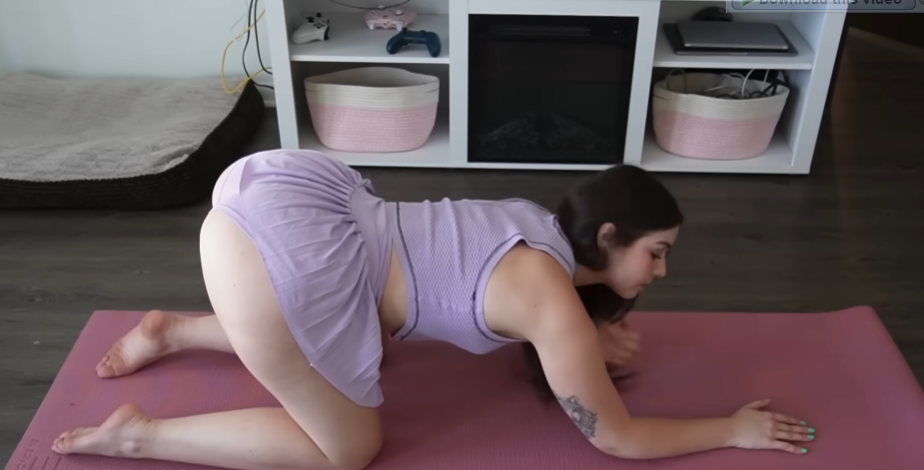
You should never stretch cold muscles. Always start with a short warm-up to get your blood flowing and prepare your joints.
Quick warm-up routine:
- Jog in place: 1 minute
- Arm circles: 20 seconds each direction
- Hip circles: 10 circles each way
- Leg swings: Forward-backward, then side-to-side (10 each leg)
- Jumping jacks: 30 seconds
- Torso twists: 20 seconds
After your warm-up, you’ll feel more alert, your body warmer, and ready to stretch deeper.
🧘 Step 2: Basic Full-Body Stretches for Beginners (10–15 minutes)
These beginner-friendly stretches target all major muscle groups — perfect for those starting gymnastics.
1. Neck and Shoulder Stretch (30 seconds each side)
- Sit or stand tall. Drop your right ear toward your right shoulder.
- Use your right hand to apply light pressure for a deeper stretch.
- Switch sides, then roll your shoulders backward in slow circles.
This helps release tension and improve mobility in your upper body.
2. Arm and Wrist Stretch (30 seconds)
Gymnasts rely on strong, flexible arms and wrists for balance and handstands.
- Extend one arm forward, palm facing up.
- Use your other hand to gently pull back your fingers.
- Repeat with palm facing down.
- Switch arms.
Keep your stretches gentle — wrists are delicate but crucial for gymnastics.
3. Cat-Cow Stretch (1 minute)
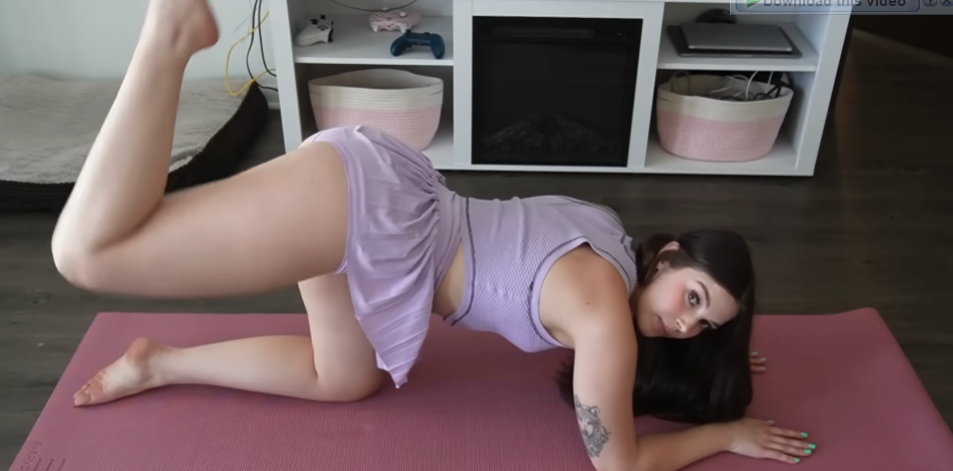
This yoga-inspired move awakens the spine.
- Get on all fours.
- Inhale: Drop your belly, lift your head and hips (Cow Pose).
- Exhale: Round your spine, tucking your chin (Cat Pose).
- Repeat slowly with deep breaths.
This stretch improves spinal flexibility and warms up your core.
4. Seated Forward Fold (1 minute)
- Sit on the floor, legs extended straight.
- Inhale, reach arms up.
- Exhale, hinge at the hips, and reach for your toes or shins.
- Keep your back long and breathe deeply.
This targets the hamstrings and lower back — essential for splits and leg control.
5. Butterfly Stretch (1 minute)
- Sit upright, bring the soles of your feet together.
- Hold your feet and gently push your knees toward the floor.
- Keep your back straight and breathe.
This opens up your inner thighs and hips — great for balance and split training.
6. Lunge Stretch (1 minute per side)
- Step one leg forward into a deep lunge.
- Keep your back leg straight and hips low.
- You’ll feel this in your hip flexors and thighs.
Optional: Raise your arms overhead for a full-body extension.
7. Bridge Pose (1 minute)
- Lie on your back, knees bent, feet flat on the floor.
- Press into your feet and lift your hips upward.
- Engage your core and glutes.
This builds strength in your lower back and legs while improving flexibility for backbends.
8. Standing Side Stretch (30 seconds each side)
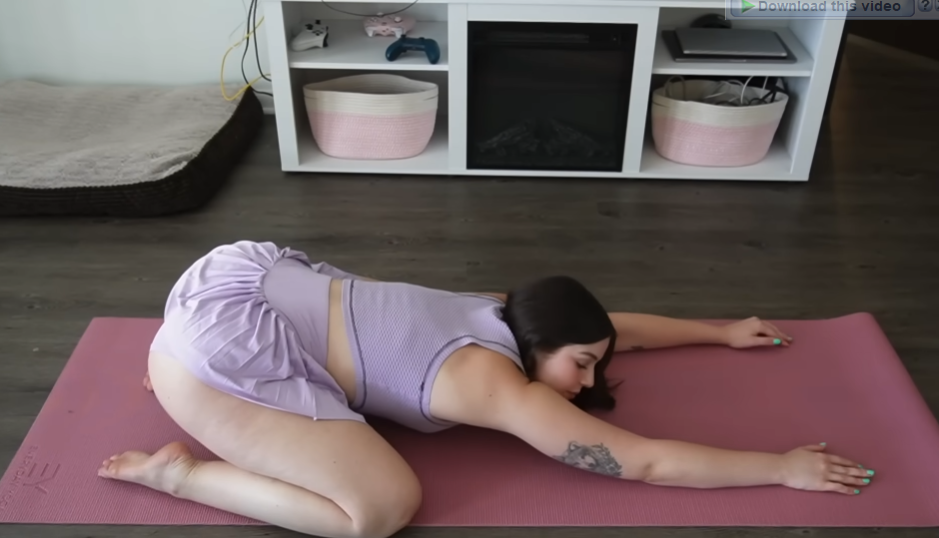
- Stand tall with feet hip-width apart.
- Raise one arm overhead and lean to the opposite side.
- Keep your chest open and breathe deeply.
This wakes up your torso, ribs, and shoulders — great for improving mobility in cartwheels and other side-body movements.
🤸♀️ Step 3: Beginner Gymnastics Positions and Skills
Now that your body is stretched and warm, let’s learn some foundational gymnastics moves. These exercises build balance, coordination, and strength while staying safe for beginners.
1. Basic Gymnast Stance
This is your starting and finishing pose for most gymnastics moves.
- Stand tall with feet together.
- Arms extended overhead, fingers pointed.
- Chin slightly up, core tight, shoulders down.
It may look simple, but it builds posture, discipline, and awareness — key for every gymnast.
2. Lunge Position
Used for cartwheels and handstands.
- Step one leg forward.
- Keep your front knee bent and back leg straight.
- Raise your arms overhead, biceps near your ears.
This teaches balance and proper alignment before more advanced movements.
3. Tuck Position
The tuck is used for rolls, jumps, and flips.
- Sit on the floor, knees pulled tightly to your chest.
- Wrap your arms around your shins and hold.
This develops body control and strengthens your abs.
4. Forward Roll
One of the first gymnastics moves every beginner learns.
- Start standing, then squat down, hands on the mat.
- Tuck your chin to your chest and push forward, rolling over your shoulders.
- Keep your body rounded and finish in a squat.
It’s simple but builds coordination and confidence.
5. Handstand Practice (Against a Wall)
Handstands improve upper-body strength and balance.
- Stand about one foot from a wall.
- Place your hands shoulder-width apart on the floor.
- Kick one leg up, then the other, until your feet rest on the wall.
- Engage your core and hold for a few seconds.
Focus on stability first, not height or duration.
6. Bridge Hold (Backbend)
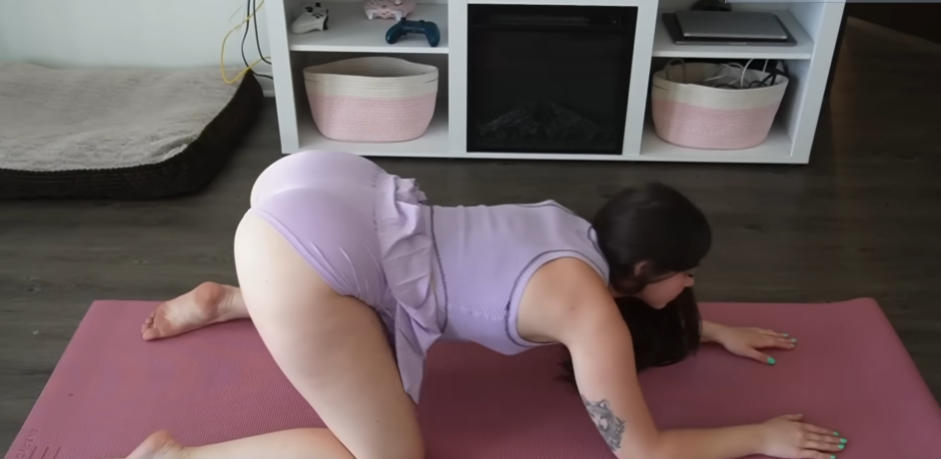
A favorite in gymnastics for improving back flexibility.
- Lie on your back, bend your knees, and place your hands beside your ears.
- Press into your hands and feet, lifting your body into a bridge.
- Hold for 5–10 seconds, then slowly lower down.
Always stretch your shoulders and spine before doing bridges.
7. Cartwheel Preparation
You don’t need to flip right away — start slow.
- From a lunge, place your hands on the ground one at a time.
- Kick your back leg over in a semi-arc, then follow with the front leg.
- Practice the motion until you feel comfortable with balance and direction.
Once confident, you can turn it into a full cartwheel!
🌸 Step 4: Cool Down (5 minutes)
After gymnastics or stretching, cooling down helps your body recover and prevents stiffness.
Cool-down routine:
- Child’s Pose: Sit back on your heels, reach arms forward, rest forehead on the mat.
- Supine Twist: Lie on your back, drop knees to one side, arms stretched out.
- Happy Baby Pose: Grab your feet and gently rock side to side.
- Deep Breathing: Sit cross-legged, close your eyes, and inhale peace… exhale tension.
✨ Final Thoughts
Stretching and gymnastics for beginners is not about perfection — it’s about progress. Your flexibility won’t come overnight, and your balance might wobble. But every time you stretch, roll, or attempt a pose, your body learns something new.
Consistency is key. Even 15 minutes a day will make a huge difference in how your muscles move and how your body feels. Listen to your body, stay patient, and celebrate every small improvement.
Remember what every gymnast learns: strength and flexibility come not from speed, but from practice and passion.
So keep stretching, keep smiling, and let every move remind you how amazing it feels to grow — one pose, one breath, one day at a time. 🌟🤸♀️🧘♀️
